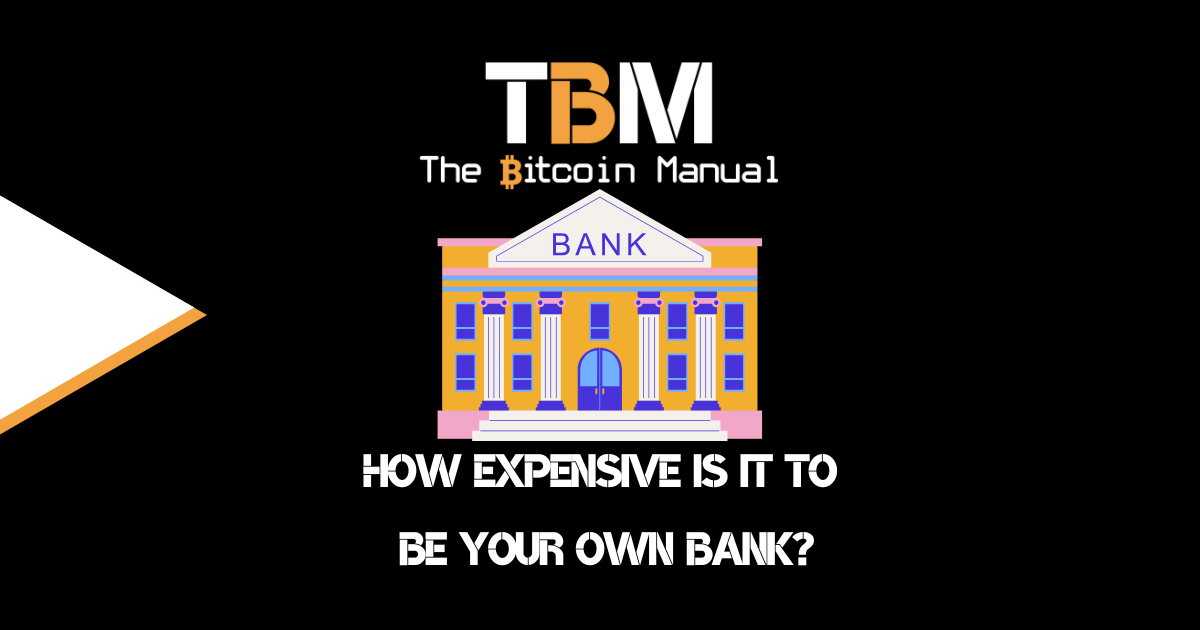Let me start by saying that I am a big fan of the IDEA of decentralised finance or, as the marketing buzzword sloshing around these days, DEFI. The IDEA that we engage with various financial services through open and permissionless systems and find risk and reward options we feel suit our capital requirements is revolutionary.
When millions, if not billions, are setting the terms for access to the capital they’ve acquired, it creates a free market yield curve and establishes a robust cost to capital that would constantly flow into the best uses for said capital.
Now, as is the case with this cryptocurrency sector, ideas and narratives are peachy, and implementation is a usually disappointing reality.
DEFI disappointment
I know many of these DEFI tools, chains, systems and protocols are outright scams. Still, I try some mental gymnastics and tell myself they are all test-nets exploring various models that will fail and push people towards one Bitcoin and sound money DEFI. The sad thing is they are playing with real money and not testnet coins, people are putting their REAL Bitcoin and their hard-earned fiat behind these DEFI projects only to be rug pulled.
Yes, many are gamblers, but some have been peppered by the traditional system of low-interest rates and management fees and see this as a way out, to try and multiply the capital they have left, for those are the people really feel for and would urge them to look at Bitcoin and NOT DEFI.
Staking is piss-taking.
Now the idea of locking up your funds for a return over a set period is not a new one; we’ve had this with many traditional market investment vehicles. Cryptocurrency and DEFI have just taken something familiar and bastardised it to facilitate another Ponzi scheme. That’s normally how Ponzi’s work; they take a commonly accepted practice, slap insane returns on it as their marketing pitch and call it a day as they watch the money roll in.
I see so many people, even good friends of mine, proud of them staking their coins and the interest they’re getting out of it. Now to salvage this practice, I will say the concept of saving and getting a return, holding an asset, deploying capital to a provider, seeking out risk-adjusted returns is skills we should all learn and practice; these people are simply using the wrong mechanism.
The truth is many of these so-called staking coins paying you these high-interest rates are paying you directly from the inflation. Oh yes, you’re getting 7-12% returns, but the supply of the coin grows at 15-20%, so what’s the point? You’re actually being diluted as you earn more, just like the fiat system.
If you’re bagging 7%, but the inflation rate of the coin is 15%, that means you’re actually getting a negative return.
Yes, you’re losing half your purchasing power even though the number of coins you get increases each month; this is the sleight of hand trick these DEFI tokens are selling you.
Ever heard of the fisher effect?
The Fisher Effect is an economic theory created by economist Irving Fisher that describes the relationship between inflation and real and nominal interest rates. The Fisher Effect states that the real interest rate equals the nominal interest rate minus the expected inflation rate. Therefore, real interest rates fall as inflation increases unless nominal rates increase at the same rate as inflation. – Investopedia
So as I mentioned above, you need to look at the rate of increase in currency units versus the interest return you’re getting to measure if you receive a positive return effectively.
Retail investors, broadly speaking, still have a very simplistic view of interest rates, so a higher interest rate means good lower interest rate means bad.
The sad reality of DEFI
I would never discourage anyone from wanting to try DEFI, go ahead, learn as much as you can, mess around, not with your life savings of course, but learn about how it works, these skills will become applicable under the Bitcoin standard.
What I will say, however, is be cautious, don’t go yield chasing, don’t trust platforms, custodial or so-called decentralised protocols either.
If you want to DEFI or CEFI with a little bit of your stack and earn a return, that’s reasonable in my opinion.
However, once you delve into these shitcoin projects staking and DEFI tokens, all you’re doing is going back to the inflation game of fiat, just hyped up to 1000.
The truth is DEFI in its current forms is NOT the future of money it’s the present scam of the day.
DEFI will come to Bitcoin in different forms
Yes DEFI is the hot new craze now and YES DEFI will come to Bitcoin, we already see it surfacing in more constructive terms with the likes of HODLHODL’s peer to peer lending and the lightning networks LIFI liquidity rental pools. Yes they are not as popular as these other services and the interest rates won’t be mega sexy big numbers, but the spread will be attractive.
Remember that Bitcoins inflation rate currently sits at 1.76 and will continue to decrease over time so the returns you get from BTC are real positive returns.
Anything above 1.8% and you’re in the money.





One Response
As more Bitcoin DeFi platforms come online, why wouldn’t you dabble with them – 1.8% may not sound like a lot but when the inflation rate is decreasing every 4 hours and the underlying asset is growing in value in the long term, your sats aren’t getting diluted!